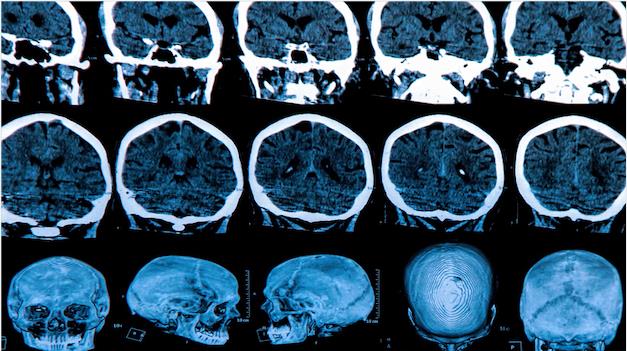
“[GLP-1] does all kinds of things in the body,” Christian Hölscher, co-founder and chief scientific officer at Kariya Pharmaceuticals and a professor of neuroscience at the Henan University of Chinese Medicine in China, told BioSpace. “It’s just a coincidence that they found an effect in diabetes first.” Kariya and other companies are now pursuing the use of these drugs to treat neurodegeneration.
GLP-1 is a hormone that stimulates insulin secretion after eating, enabling a feeling of fullness and triggering cells to take up glucose from the blood. GLP-1 agonists mimic the effects of this hormone, making them an effective treatment for diabetes and obesity. But GLP-1 is also produced in the central nervous system, predominantly in the brainstem, and its receptors are expressed in multiple regions of the brain, including the striatum and nucleus accumbens.
“There’s no doubt there’s increasing insulin resistance with aging across the whole body,” he said, meaning cells fail to take up glucose in response to the hormone. “When there’s sub-optimal glucose and highly active neurons have limited access to energy, they dysfunction and ultimately die on a chronic basis.” The most active neurons are in regions of learning and memory, Fillit said, making them more susceptible to glucose deprivation and, ultimately, neurodegeneration.

Recent Research
Alzheimer’s disease is sometimes called type 3 diabetes because insulin resistance is known to be a contributing factor. A review article published in 2022 in Frontiers in Endocrinology posits that drugs that target GLP-1 to treat type 2 diabetes (T2D) could potentially treat Alzheimer’s as well.
GLP-1 receptor agonists have shown the ability to reduce neuroinflammation and oxidative stress—well-recognized contributors to Alzheimer’s disease—and provide neurotrophic effects in animal models of Alzheimer’s, the authors write, while cautioning that this needs to be verified by further clinical trials.
A poster presentation at the 2023 International Conference on Alzheimer’s and Parkinson’s Diseases and Related Neurological Disorders (AD/PD) highlighted positive results from one such trial, the Phase II ELAD study, which assessed Novo Nordisk’s liraglutide in mild to moderate Alzheimer’s. ADDF, which Fillit said has been “very interested” in this pathway for many years, was involved in funding the trial.
In 2021, Novo Nordisk—which also markets the GLP-1 receptor agonist semaglutide as Rybelsus for T2D—launched two Phase III trials, EVOKE and EVOKE Plus, studying the drug in approximately 3,700 people with early-stage Alzheimer’s disease. In an email sent to BioSpace, a Novo representative said that the trials are ongoing but declined to comment further for this article. The EVOKE trials are expected to be completed in September 2025.

Hölscher noted that drugs like liraglutide and semaglutide were not designed to treat diseases of the brain. “They’re actually designed to stay in the blood, which is good for diabetes but bad for Alzheimer’s because a drug that stays in the blood doesn’t get into the brain.”
At Kariya, Hölscher has designed drugs to be taken up into the brain that he said show much better effects in preclinical studies. The molecules also have a second component: a glucose-dependent insulinotropic polypeptide (GIP), a hormone he said “works hand-in-hand” with GLP-1. This dual mechanism of action is the same as Eli Lilly’s Mounjaro, currently marketed for T2D and being tested for its effect on obesity. Kariya expects to begin a Phase I trial in September.
A Combination Candidate
Hölscher said the biggest barrier to the uptake of GLP-1 as an approach to Alzheimer’s—and other diseases of the brain—is psychological. “When you talk to people who work in Alzheimer’s, they have never heard of GLP-1,” he said. “It’s still amyloid, amyloid, amyloid.” This dilemma also exists in reverse in the diabetes space, where he said researchers “know everything about GLP-1, but they don’t know anything about the brain.” Combined, this makes it difficult to win research dollars, he noted.
But providing that the mechanism continues to bear out in the clinic, there are advantages to GLP-1 drugs over anti-amyloid antibodies, Hölscher said. “We know that the drugs are safe, they’re easy to apply, and you don’t need IV injections as with the antibodies.”
It also doesn’t need to be one approach or the other. As Fillit noted, GLP-1 drugs would be “very good candidates to be delivered in combination” with an anti-amyloid drug like Eisai and Biogen’s recently approved Leqembi (lecanemab) or Lilly’s investigational donanemab, because there is no overlap in the mechanism of action.
In its confirmatory trial, Leqembi was shown to reduce clinical decline in mild to moderate Alzheimer’s by 27%, while donanemab reduced decline in early symptomatic Alzheimer’s by up to 36%. While calling these results “meaningful” and “a big breakthrough,” Fillit said it is obviously not enough. “We want to get to 100% slowing and even prevention,” he said.

Check out our AAV CDMO service to expedite your gene therapy research
PackGene is a CRO & CDMO technology company that specializes in packaging recombinant adeno-associated virus (rAAV) vectors. Since its establishment in 2014, PackGene has been a leader in the AAV vector CRO service field, providing tens of thousands of custom batches of AAV samples to customers in over 20 countries. PackGene offers a one-stop CMC solution for the early development, pre-clinical development, clinical trials, and drug approval of rAAV vector drugs for cell and gene therapy (CGT) companies that is fast, cost-effective, high-quality, and scalable. Additionally, the company provides compliant services for the GMP-scale production of AAVs and plasmids for pharmaceutical companies, utilizing five technology platforms, including the π-Alpha™ 293 cell AAV high-yield platform and the π-Omega™ plasmid high-yield platform. PackGene’s mission is to make gene therapy affordable and accelerate the launch of innovative gene drugs. The company aims to simplify the challenging aspects of gene therapy development and industrialization processes and provide stable, efficient, and economical rAAV Fast Services to accelerate gene and cell therapy development efforts from discovery phase to commercialization.
Related News
Exploring Tau Protein’s Role in Glaucoma: New Insights and Therapeutic Potential
Glaucoma, a chronic neurodegenerative disorder, leads to irreversible vision loss by damaging retinal ganglion cells (RGCs) and the optic nerve, often associated with increased intraocular pressure (IOP). Despite the benefits of IOP-lowering treatments, the underlying...
FDA-mandated CAR-T monitoring period could be halved, say researchers
In patients with diffuse large B-cell non-Hodgkin lymphoma (DLBCL), the two hallmark post-chimeric antigen receptor (CAR)-T therapy toxicities are extremely rare after two weeks, supporting a shorter, more flexible toxicity monitoring period, according to a study...
Ancestral CRISPR-Cas13 Ribonucleases Discovered: Implications for Genome Editing
In a pioneering study published in *Science*, a team of researchers led by Peter H. Yoon and Jennifer A. Doudna from the University of California, Berkeley, has made a remarkable discovery in the realm of CRISPR technology. The team has identified an ancestral clade...
KBI Biopharma Expands Manufacturing Contract with Global Pharmaceutical Company
KBI Biopharma Inc., a JSR Life Sciences company and global cGMP contract development and manufacturing organization (CDMO), has extended and expanded its manufacturing contract with a leading global pharmaceutical company. Originally initiated in 2020, the renewed...
Related Services

Plasmids GMP Services
Multiple scales & grade of solutions of various kind of plasmids suitable for multiple treatments in a fast and cost effective way.
READ MORE

AAV GMP Services
Ranging from small-scale AAV production, to large-scale AAV cGMP manufacturing for animal studies.
READ MORE

Technology Platforms
PackGene’s proprietary π-Alpha™ 293 AAV High-yield Platform increases AAV production by 3 to 8 times that of traditional platforms.
READ MORE

